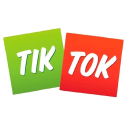I Designed A Better Way To Boil Seafood And Make $285K/Year
Hello! Who are you and what business did you start?
Hello! I’m Robert Lapeyre, the founder of Boil Boss. Launched in the summer of 2017 as I was graduating from the University of Mississippi, Boil Boss was founded on a single product, The Boil Boss.
The Boil Boss is a boiling accessory designed to help prevent boilers from overcooking their seafood. It has a unique 360-degree cooling system for crawfish and outdoor seafood pots. Its simple design uses a standard garden hose to rapidly cool backyard seafood boils in as little as 3 minutes, all without diluting the user's recipe with ice (a relatively common way for addressing the issue of overcooking).
Quickly stopping the cooking process is the most critical step in a boil. The boil boss does this while also promoting flavor absorption, reducing batch times, and providing an easy-to-follow process.
In 2023, our e-commerce platform generated revenue of $285,000. As we look to the future in 2024, our primary objective is expansion. Our strategic focus is directed towards broadening our customer base by prioritizing the development and optimization of our own website.

Download the report and join our email newsletter packed with business ideas and money-making opportunities, backed by real-life case studies.

Download the report and join our email newsletter packed with business ideas and money-making opportunities, backed by real-life case studies.

Download the report and join our email newsletter packed with business ideas and money-making opportunities, backed by real-life case studies.

Download the report and join our email newsletter packed with business ideas and money-making opportunities, backed by real-life case studies.

Download the report and join our email newsletter packed with business ideas and money-making opportunities, backed by real-life case studies.

Download the report and join our email newsletter packed with business ideas and money-making opportunities, backed by real-life case studies.

Download the report and join our email newsletter packed with business ideas and money-making opportunities, backed by real-life case studies.

Download the report and join our email newsletter packed with business ideas and money-making opportunities, backed by real-life case studies.
















